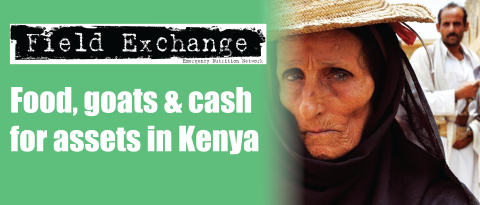Nutrition and baseline survey of older people in three refugee camps in Dadaab
Summary of research1

An older man in Dadaab camps during the HOA crisis in 2011
This short summary of the findings of a nutrition survey conducted by HelpAge International in a refugee population in Kenya lend support to two other pieces in the research section of this issue of Field Exchange where lack of funding for older people caught up in humanitarian crises as well and neglect of the needs of older people amongst displaced populations are highlighted. (Ed)
Between the 3rd-13th of October 2011, HelpAge International conducted a nutrition survey among refugees aged 60 years and above in the three main camps of Dadaab (Ifo, Dagahaley and Hagadera), northeastern Kenya. The aims of the survey were to estimate the prevalence of acute malnutrition, health and social status of people aged 60 years and above. The survey used two-stage cluster sampling.
A total of 629 older people were interviewed, and their measurements taken (height, half arm span, and mid-upper arm circumference (MUAC)). Body mass index (BMI) was also calculated. The team used questionnaires to collect data on eating habits, disabilities, social and health status, and access to water and sanitation. The prevalence of malnutrition, using MUAC-based case definitions, is given in Table 1.
| Table 1: Prevalence of acute malnutrition in older people in Dadaab camps | ||
| Class | Case definition |
4.63% (95% CI=3.3%; 6.0%) |
| Global acute malnutrition (GAM) | UAC <210mm or oedema | 4.63% (95% CI=3.3%; 6.0%) |
| Moderate acute malnutrition (MAM) | 185mm = MUAC <210mm without oedema | 2.71% (95% CI=1.5%; 3.9%) |
| Severe acute malnutrition (SAM) | MUAC <185mm or oedema | 1.91% (95% CI=0.9%; 3.0%) |
The survey found that between 460-840 older people living in Dadaab camps were in need of some form of nutritional support. Risk factors associated with malnutrition were not being included in the general ration, having a low dietary diversity and eating less than three different foods items and less than two meals per day.
1HelpAge International (2011). Nutrition and baseline survey of older people in three refugee camps in Dadaab, October 2011. Published by HelpAge International, www.helpage.org
Imported from FEX website


